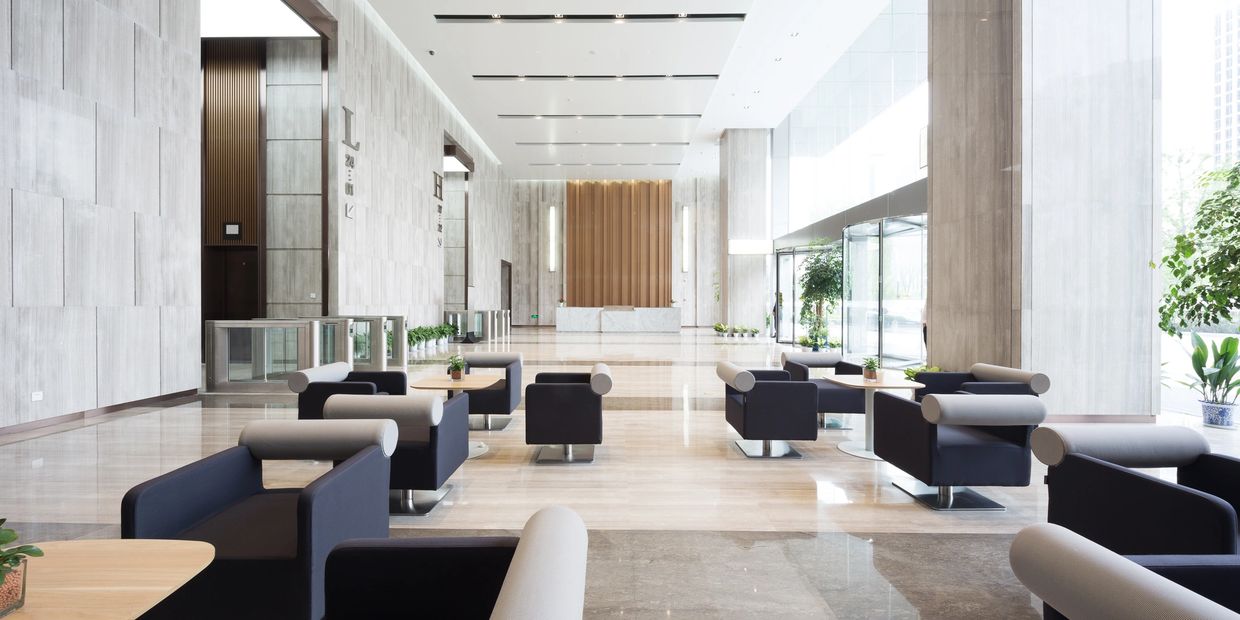
Interior Designing For Buildings In Mumbai - Designo Interiors
At Designo Interiors, we believe that building interior design is not just about creating beautiful spaces, but also about creating functional and sustainable spaces that enhance the performance and experience of the users. That is why we offer integrated and holistic interior design solutions that suit your building needs and goals.
We are a team of experienced and professional building interior designers who can handle any type of building project, from commercial to residential, from public to private. We offer end-to-end solutions for all your building interior needs, from planning to execution.
We understand that every building is unique and has its own challenges and opportunities. That is why we offer personalized and flexible interior design services that adapt to your changing requirements and budget. We listen to your ideas and expectations, and then create a design plan that matches your preferences. We also use our expertise and innovation to suggest smart and sustainable solutions that enhance the functionality and aesthetics of your building.
We have successfully completed several building interior design projects in India, ranging from offices to hotels, from schools to hospitals. We are proud of our work as building interior designers in Mumbai, and we are always ready to take on new challenges and opportunities.
What Makes Us Different from Other Building Interior Designers in Mumbai?
At designo interiors, we have a deep understanding of the “whole building” design process and the importance of collaborating with other major disciplines, key stakeholders, client, and end-user contacts. We pay attention to the details and specifications that make a difference in the quality and performance of your building. Here are some of the aspects that we consider in our building interior design projects:
- Strategic programming: We work closely with you to understand your business and space needs. We help you link your organization’s mission, business, and work processes to an intelligent workplace and space strategy. We communicate the intent or project plan and what “whole building” systems and architecture can be explored to meet your expectations.
- Accessibility: We plan accessibility early in the process for your building interior design project. We consider various types of disabilities, including those with visual, learning, mobility, speech, and hearing impairments. We also educate and inform our staff regarding how to provide an appropriate service or accommodation that might be requested or required.
- Lobby space: We design the lobby space with key design concerns in mind, such as balancing aesthetics, security, sustainability, and operational considerations. We address physical features such as doorway openings, aisles, ramps, elevators, information desks, directional signs, finishes, furniture, signage, and art. We create a spatial compression/release experience that enhances the aesthetic experience of the visitors.
- Other spaces: Depending on the type and function of your building, we design other spaces such as offices, meeting rooms, classrooms, auditoriums, cafeterias, restrooms, etc. with optimal space utilization and circulation in mind. We consider the needs and expectations of different types of users such as employees, customers, students, patients, etc. We also follow the standards and guidelines for accessibility, safety, and comfort.
How to Get Started with Designo Interiors?
If you are looking for a reliable and professional building interior design firm in Mumbai that can handle both the creative and technical aspects of your project, look no further than designo interiors. Contact us today to get a free consultation and quote for your building project. You can reach us by phone, email, or online form. We look forward to hearing from you soon!
Copyright © 2025 Designo Interiors - All Rights Reserved.
Architects And Interior Designers In Mumbai, Best Home Interiors In Mumbai, Best Interior Design Firms In Mumbai, Best Interior Designers In Mumbai, Best Interior Firms In Mumbai, Commercial Interior Designers In Mumbai, Free Online Consultation For Interior Design, Home Interior Design Services In Mumbai, Home Interior Designers In Mumbai, Hotel Interior Designers In Mumbai, Interior Decorators In Mumbai, Interior Design Firms In Mumbai, Interior Design Services In Mumbai, Interior Designing Company In Mumbai, Interior Designing Consultancy In Mumbai, Interior Designing For Buildings In Mumbai, Interior Designing For Hospitals In Mumbai, Interior Designing For Hotels In Mumbai, Interior Designing For Offices In Mumbai, Luxury Interior Designers In Mumbai, Office Interior Designer In Mumbai, Online Consultation For Interior Design, Online Interior Design Consultant In Mumbai, Online Interior Design Services In Mumbai, Residential Interior Designers In Mumbai, Restaurant Interior Designers In Mumbai, Top Interior Designers In Mumbai, Commercial Office Interior Designer In Mumbai, Hotels Interior Design Services In Mumbai, Interior Designing For Residentials In Mumbai
*Terms & Conditions Applied.